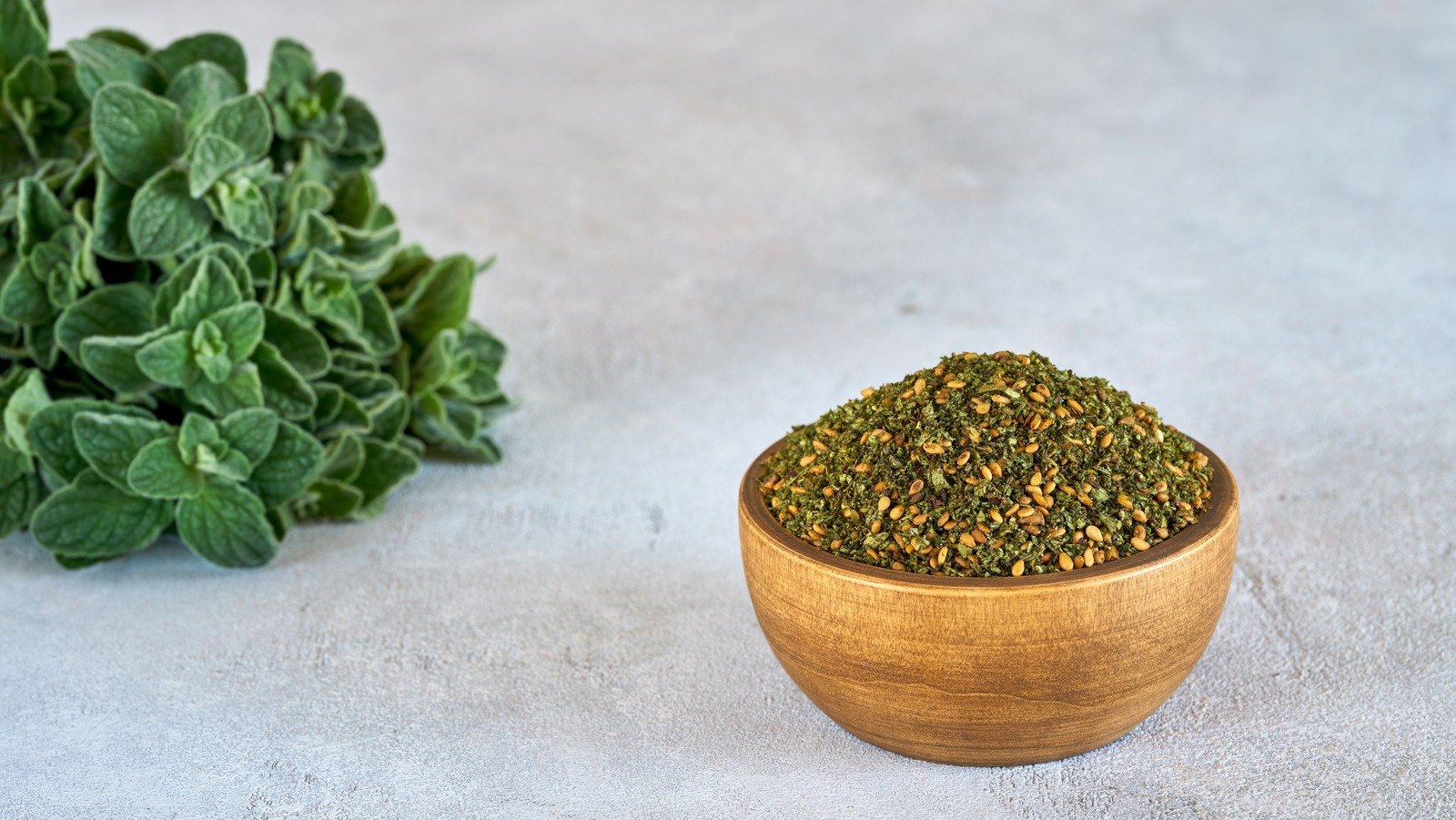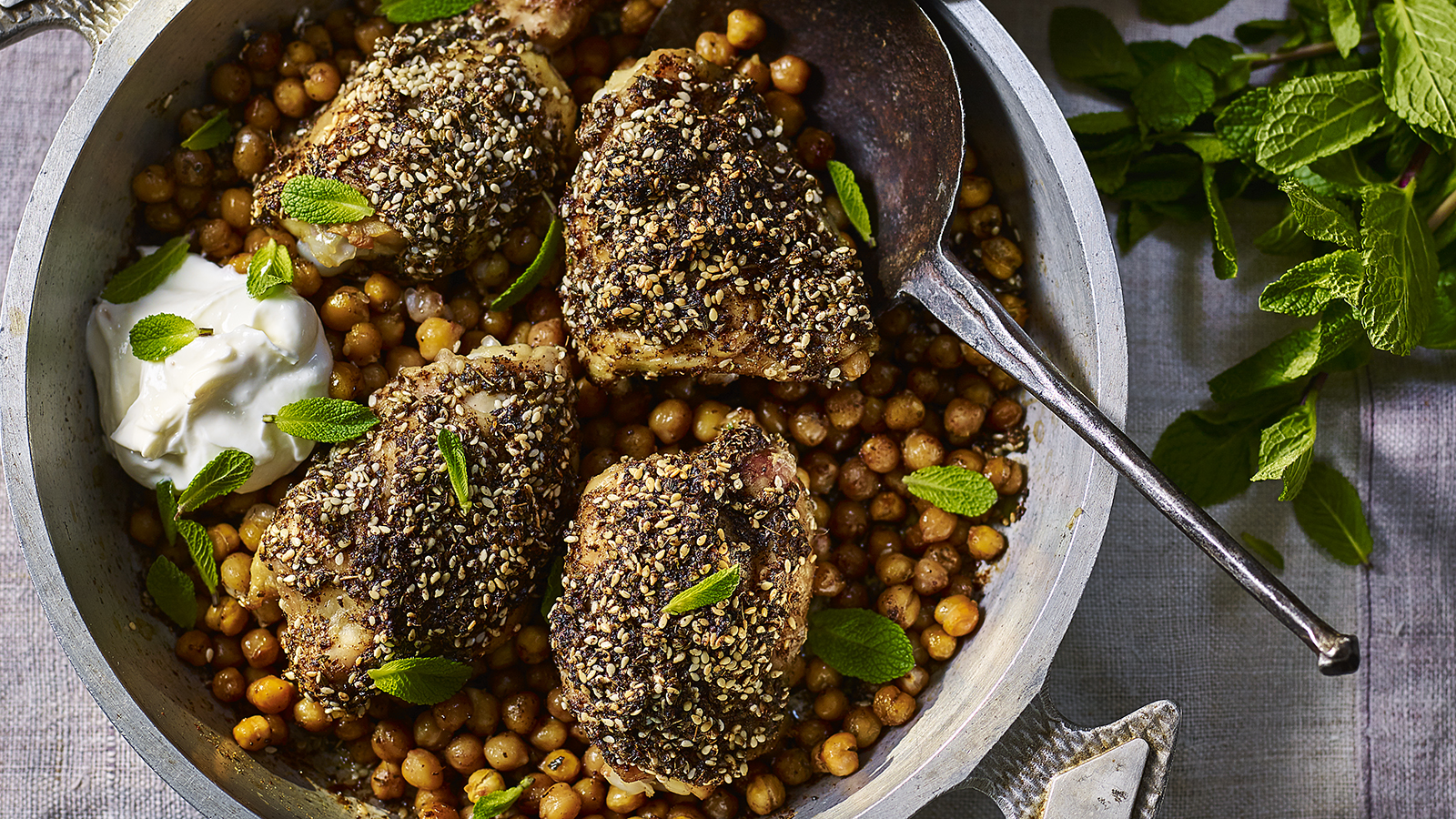za’atar. This ancient and versatile blend, comprised of fragrant herbs, tangy spices, and nutty seeds, has been a staple in the region’s culinary traditions for centuries. But za’atar is more than just a tasty addition to your pantry; it may also offer a range of health advantages that have piqued the interest of both food enthusiasts and wellness seekers alike.
In this comprehensive guide, we’ll embark on a journey to uncover the secrets of za’atar. From its historical roots and unique composition to the scientific research exploring its potential health benefits, we’ll leave no stone unturned in our quest to understand this fascinating spice blend. We’ll also provide practical tips for selecting high-quality za’atar and share creative ideas for incorporating it into your culinary creations, helping you elevate your dishes from ordinary to extraordinary.
The Origins and Composition of Za’atar: A Blend of History and Flavor
Za’atar’s story begins in the sun-drenched lands of the Middle East, where it has been a beloved part of the culinary landscape for thousands of years. The exact origin of this spice blend is difficult to pinpoint, as variations of za’atar have been used across the region, from Lebanon and Syria to Jordan and Israel. Each country and even each family may have their own unique recipe, passed down through generations and reflecting the local terroir and cultural preferences.
At its core, za’atar is a harmonious blend of dried herbs, spices, and seeds. The foundation of most za’atar mixes is dried thyme, which lends its distinctive earthy, slightly minty aroma to the blend. Other common ingredients include sumac, a tangy and bright red spice derived from the berries of the sumac bush, and sesame seeds, which add a nutty depth and subtle crunch. Some regional variations may also include dried oregano, marjoram, or hyssop, as well as salt and other spices like cumin or coriander.

The proportions of these ingredients can vary widely, creating a spectrum of flavors that range from bright and lemony to deep and savory. This versatility is part of what makes za’atar such an intriguing and beloved spice blend, as it can adapt to suit different tastes and culinary applications. Whether you prefer a more herb-forward mix or one with a pronounced sesame flavor, there’s a za’atar blend out there for every palate.
The Science Behind Za’atar: Exploring Potential Health Benefits
Beyond its irresistible flavor, za’atar has garnered attention for its potential health benefits. While research on this specific blend is still emerging, many of its individual components have been studied for their nutritional and medicinal properties. Let’s dive into some of the science behind za’atar’s potential health advantages:
1. Antioxidant Properties
One of the most promising aspects of za’atar is its antioxidant content. Thyme, sumac, and sesame seeds, which form the backbone of most za’atar blends, are all rich sources of various antioxidant compounds. Thyme contains thymol and carvacrol, two potent antioxidants that have been shown to help neutralize harmful free radicals in the body. Sumac is particularly high in anthocyanins and flavonoids, antioxidants that may help reduce inflammation and protect against chronic diseases. Sesame seeds, meanwhile, are a good source of lignans and vitamin E, both of which have antioxidant properties.
2. Digestive Health
Some of the herbs found in za’atar, particularly thyme and oregano, have been traditionally used to support digestive health. These herbs contain compounds that may help stimulate the production of digestive enzymes, promote bile flow, and soothe gastrointestinal discomfort. While more research is needed to fully understand the extent of these benefits, incorporating za’atar into your diet may offer a flavorful way to support your gut health.
3. Antimicrobial Activity
The essential oils found in thyme and oregano, two common ingredients in za’atar, have demonstrated antimicrobial properties in laboratory studies. These oils contain compounds like thymol and carvacrol, which have been shown to inhibit the growth of various bacteria and fungi. While more research is needed to determine the practical implications of these findings, the antimicrobial potential of za’atar’s ingredients is an intriguing area of study.
4. Blood Sugar Management
Some preliminary research suggests that certain compounds found in za’atar may have potential benefits for blood sugar control. For example, animal studies have shown that sumac, a key ingredient in many za’atar blends, may help improve insulin sensitivity and reduce blood sugar levels. However, more human studies are needed to confirm these effects and determine the optimal intake of za’atar for blood sugar management.

It’s important to note that while these potential health benefits are promising, more research specifically on za’atar as a whole is needed to fully understand its impact on human health. Additionally, za’atar should not be viewed as a substitute for medical treatment, and individuals with pre-existing health conditions or concerns should consult their healthcare provider before making significant changes to their diet.
Choosing and Storing Za’atar: Quality Matters
To fully enjoy the flavor and potential health benefits of za’atar, it’s crucial to choose a high-quality blend and store it properly. Here are some tips to help you select and preserve the best za’atar for your culinary needs:
1. Freshness
Like most spices, za’atar is best when it’s fresh. Look for blends that have a vibrant green color and a strong, fragrant aroma. Avoid za’atar that appears dull, clumpy, or has little scent, as these may be signs of age or poor quality. When possible, purchase za’atar from reputable sources that prioritize freshness and quality, such as specialty spice shops or Middle Eastern grocers.
2. Ingredient Quality
The quality of the individual ingredients in za’atar can greatly impact its flavor and potential health benefits. Opt for blends that use high-quality, whole ingredients, such as organic dried herbs and freshly toasted sesame seeds. Be wary of za’atar mixes that contain artificial additives, fillers, or excess salt, as these can detract from the authentic taste and nutritional value of the blend.
3. Storage
To maintain the freshness and potency of your za’atar, proper storage is key. Keep the blend in an airtight container away from direct light, heat, and moisture. Glass jars or tins with tight-fitting lids are ideal for preserving the quality of the spice mix. When stored correctly, za’atar can maintain its flavor and aroma for several months, although it’s best to use it within a few months of purchase for optimal taste and nutritional benefits.
By following these guidelines and sourcing your za’atar from trusted suppliers, you can ensure that you’re getting the most out of this flavorful and nutritious spice blend.
Culinary Creativity: Incorporating Za’atar into Your Kitchen

One of the joys of za’atar is its versatility in the kitchen. This aromatic spice blend can elevate a wide range of dishes, from traditional Middle Eastern fare to modern culinary innovations. Here are some ideas to inspire your za’atar-infused creations:
1. Traditional Uses
In Middle Eastern cuisine, za’atar is often enjoyed as a simple dip or spread. Mix the spice blend with high-quality olive oil and serve it alongside fresh pita bread, or brush the oil and za’atar mixture onto the bread before baking for a fragrant and savory treat. Za’atar also makes a delicious seasoning for grilled meats, such as chicken, lamb, or fish, adding depth and complexity to their natural flavors.
2. Roasted Vegetables
Elevate your roasted vegetables by tossing them with olive oil and a generous sprinkle of za’atar before placing them in the oven. The blend’s earthy, tangy, and slightly nutty notes pair beautifully with the caramelized sweetness of roasted root vegetables like carrots, sweet potatoes, and beets. Za’atar can also add a flavorful kick to roasted cauliflower, eggplant, or zucchini.
3. Salads and Dressings
Add a Middle Eastern twist to your salads by incorporating za’atar into your dressings or sprinkling it directly onto the greens. The spice blend’s bright, herbal flavors complement a variety of salad ingredients, from crisp cucumbers and juicy tomatoes to creamy avocados and tangy feta cheese. For a simple and flavorful dressing, whisk together olive oil, lemon juice, za’atar, and a touch of honey or Dijon mustard.
4. Eggs and Dairy
Za’atar’s savory and slightly pungent notes make it an excellent partner for rich and creamy dishes like eggs and dairy. Sprinkle the spice blend onto scrambled eggs or omelets for a flavorful breakfast or brunch option, or stir it into softened butter to create a compound butter that’s perfect for spreading on toast or melting over steamed vegetables. Za’atar can also add a delightful tang to yogurt dips, labneh, or even homemade cheese.
These are just a few ideas to get you started, but the possibilities for incorporating za’atar into your culinary repertoire are truly endless. Don’t be afraid to experiment and let your creativity guide you as you explore the many ways to enjoy this versatile and flavorful spice blend.
The Future of Za’atar Research
As interest in the health benefits and culinary applications of za’atar continues to grow, researchers are exploring new avenues to better understand this ancient spice blend. Some areas of ongoing and future research include:
- Investigating the synergistic effects of za’atar’s various components and how they may work together to provide enhanced health benefits.
- Examining the impact of za’atar on the gut microbiome and its potential role in promoting digestive health and overall well-being.
- Exploring the potential of za’atar as a functional food ingredient, with targeted health benefits for specific populations or health conditions.
- Studying the sustainability and environmental impact of za’atar production, and identifying best practices for ethical and responsible sourcing of the blend’s ingredients.
As the body of research on za’atar expands, we may uncover new insights into the health benefits and culinary potential of this beloved spice blend, further solidifying its place in both traditional and modern kitchens around the world.
Conclusion: Embracing the Wonders of Za’atar
Za’atar, with its rich history, complex flavor profile, and potential health benefits, is a spice blend that deserves a place in every culinary enthusiast’s pantry. By incorporating za’atar into your meals, you can add depth, nuance, and a touch of Middle Eastern flair to your dishes while potentially supporting your overall well-being.
As with any dietary change or addition, it’s essential to listen to your body and consult with a healthcare professional if you have any concerns or pre-existing health conditions. Remember, za’atar is just one piece of the puzzle when it comes to a healthy and balanced diet, and moderation is key.
So, the next time you find yourself reaching for a flavorful and nutritious way to elevate your culinary creations, consider the wonders of za’atar. With its vibrant aroma, tantalizing taste, and potential health benefits, this ancient spice blend is sure to become a beloved staple in your kitchen and a delightful companion on your journey towards flavorful and wholesome eating.



